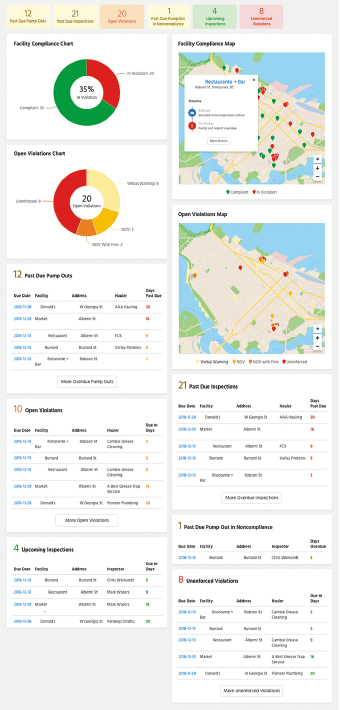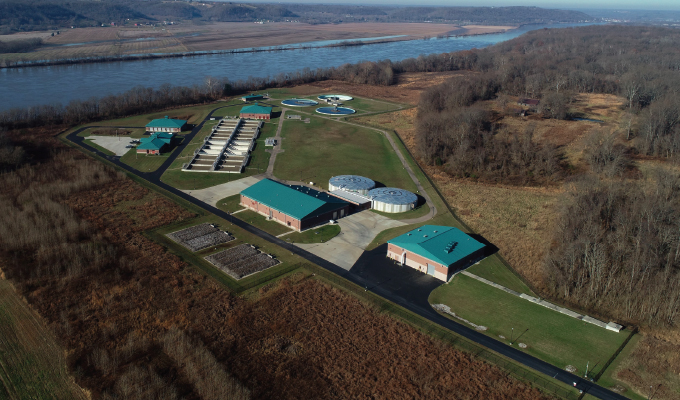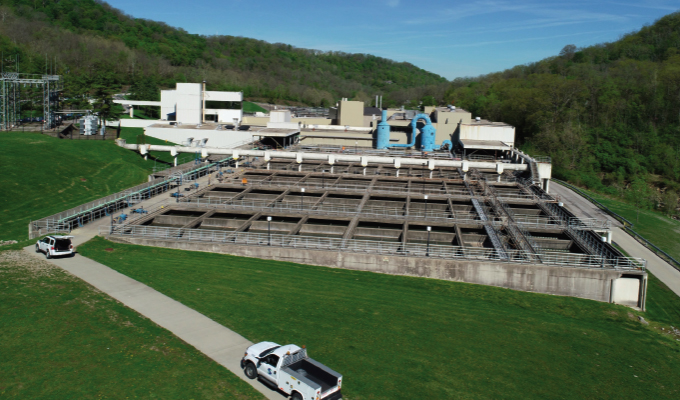By Rich Prinster, Aquatic Informatics
Sanitation District No. 1 (SD1) has managed Northern Kentucky’s wastewater and stormwater for more than seventy years and is committed to keeping its rivers clean. Every day, SD1 cleans thirty-seven million gallons of water, serving a population of 115,000 customer accounts with a network of over 2,000 miles of pipe below ground.
Sarah Griffith, laboratory and industrial pretreatment manager, oversees the laboratory and manages the industrial pretreatment and FOG (or fat, oils, and grease) programs at SD1. In the lab, the team performs 40,000 analyses per year, seven days a week. On the pretreatment side, the team oversees, inspects, and samples fifty-five industrial users in the service area, and also permits and inspects 200 food service establishments (FSEs) under the FOG program. SD1 has the second largest pretreatment program in Kentucky.
THE CHALLENGE
After using Linko, a compliance management software by Aquatic Informatics for several years, a newly developed environmental compliance module was released by the computerized maintenance management system (CMMS) that many departments within SD1 used for the scheduling and tracking of work. As an exercise in due diligence, the industrial pretreatment and FOG program teams attempted to move to this new module, as it seemed like a practical decision for the organization.
Although the CMMS was a very robust and comprehensive program for other teams within the organization, it quickly became apparent that the CMMS’ compliance capabilities were not advanced enough to manage SD1’s pretreatment and FOG programs.
“The CMMS worked to the extent that you can handle industries as assets and track utilization of time,” explains Griffith. “However, it was just not able to handle compliance and compliance is a big part of what we do.”

ORGANIZING THE DATA
In order to not lose Linko’s purpose-built compliance capabilities, SD1 decided not to fully move away from it for their pretreatment and FOG program management so it was not hard to switch back to full functionality.
“To be honest, it was easy to stay with Linko, and it wasn’t hard to justify to our executives,” says Griffith. “Staff members were still naturally wanting to use the programs and it was already much easier to perform the functions we needed in Linko versus in our CMMS.”
Pretreatment programs involve a lot of data, compliance is complex, and regulations do change. In many ways, temporarily moving to a CMMS helped SD1 realize the value of purpose-built software. “We spent a lot of energy trying to make the CMMS work for something it wasn’t made for, especially when we already had a solution that worked,” says Griffith. “In some sense, it was good for us to become familiar with the limitations of our CMMS, but at the end of the day, Linko’s compliance capabilities aren’t to be found anywhere else.”
Now that SD1 had confirmed that their old software solution had the best capabilities, they moved over to cloud hosted environment.
“From my experience with different types of software, I’ve found that hosted environments generally work better for specialty software,” says Griffith. The transition from on premise to hosted is simple with no training required and allows for better access to the program and an added level of security.
REGULATIONS AND COMPLIANCE
SD1 also uses the LabSync function that allows for the automated transfer of results from the lab. They run LabSync nightly, so each morning new data is ready to review from LIMS. The program alerts SD1 to possible compliance issues, giving them a preliminary check on compliance.
“It’s comparable to having a second set of eyes check for compliance, but on the front end. We then can review those possible issues and move forward with enforcement as needed, resulting in amazing time savings,” says Griffith. “I’d say that it saves us thirty minutes per event, per industry. This is the module that we use the most, and with everything so automated, it eliminates redundancy and a lot of manual work.”
Regulations, and how regulations are interpreted, change over time. By automatically integrating change of regulations in the cloud environment, SD1 is able to keep on top of regulations without involving IT for software updates. Compliance Assistant and LabSync are preloaded with nearly all weekly definitions, making compliance easier to determine. The Compliance Assistant can determine compliance against rolling quarters and can identify significant non-compliance issues. “Other programs we’ve tried cannot do this well or at all,” says Griffith.

SAVING TIME IN A CHANGING WORLD
SD1 does all reporting through Linko. Having the ability to extract all of the events, site visits, sampling events, etc. from one location saves a lot of time. In addition, state reports often change slightly every year, so a key time saving feature is the ability to query data to answer the questions required for the reports as opposed to having to spend hours combing through results manually.
Permitting is another function that falls on Griffith’s team. Standardized permit templates with Permit Writer allows SD1 to establish standard permits and easily tweak when needed. Violations can be issued and tracked along with an enforcement response plan that automates compliance.
“This is a great tool for keeping permits standard, especially when changes occur and we have to reissue all fifty-five industry permits at the same time. It’s really nice to be able to pull all the pieces together and create all of the permits at once,” says Griffith.
“At the end of the day, if you aren’t familiar with pretreatment, you would think that it’s just comparing a number against the limit. If that were the case, Excel would work. But, regulations change, interpretations change, and having a software platform that keeps up with that saves time and improves compliance.”
FOR MORE INFORMATION
Rich Prinster is Linko strategic business development manager for Aquatic Informatics. Prinster has been with Aquatic Informatics for more than eight years where he has helped hundreds of municipal pretreatment programs address their data management issues with Linko software. He focuses on bridging data silos within water utilities to enable better, more timely decisions. Aquatic Informatics provides software solutions that address critical water data management, analytics, and compliance challenges for the rapidly growing water industry. Water monitoring agencies worldwide trust Aquatic Informatics to acquire, process, model, and publish water information in real time. For more information, visit www.aquaticinformatics.com.
MODERN PUMPING TODAY, June 2020
Did you enjoy this article?
Subscribe to the FREE Digital Edition of Modern Pumping Today Magazine!



